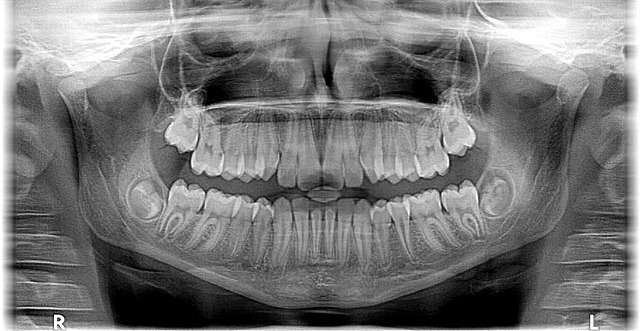
Dental Core Training – How to Apply
Contents
ToggleWhat is Dental Core Training?
Dental Core Training (DCT) refers to up to 3 years of post-graduate training that can be carried out by a dentist. Many dentists choose to do a year of DCT to simply increase their experience – particularly in Oral and Maxillofacial Surgery (OMFS) – which they can then take back to practice. It is becoming more common to do several years to strengthen your CV. In order to apply for specialist posts, you need to look at doing a few years of DCT. DCT posts range across the majority of dental specialities, though the majority of posts are OMFS. Jobs are spread throughout the United Kingdom and the application works on national recruitment.
What is the application process for Dental Core Training?
Dental core training follows a national recruitment process, much like DFT. Applications are processed using the Oriel platform. All steps of the application are then conducted through this.
The form must be filled in carefully and accurately to ensure you do not miss out on a job. You may need to attach evidence during the application, including certificates of completion, so attempt to get these arranged ahead of time.
The most recent timelines for the dental core training applications is shown below:

Situational Judgement Test (SJT)
If you complete your application correctly and meet the basic criteria for dental core training, you will be invited to sit the SJT. The aim of the SJT is to assess your personality, character, professionalism and decision-making. The exam is sat at Pearson Vue centres (i.e. where you may have sat your driving theory test).
Your SJT will make up 50% of your final mark, with your interview making up the other 50%. Mastering the SJT is quite difficult and there is not a huge amount of clinical knowledge involved. The ‘correct’ answers are the answers that were agreed on by a group. of your peers.
There are usually two types of questions:
- Rank in order – you must rank 5 options from most appropriate to least appropriate.
- Choose the 3 most appropriate – you are given several options and must choose the most appropriate 3 from this.
You usually have around 115 minutes to answer all the questions. You need to be quite efficient in reading through the questions as time can be quite tight. There are some useful books. to help you prepare:
Virtual Interview
Following the SJT, you will have a virtual interview. The virtual interview. is composed of two stations:
- Clinical scenario
- Clinical governance, quality improvement and professional skills
These scenarios will not be shared prior to the interview. When you enter on the interview day, you will have 3 minutes to read each scenario immediately before your interview. You will then have 7.5 minutes to be questions on each scenario by 2 examiners.

Clinical scenario
The clinical scenario presents you with a clinical situation but without a patient. Examples include discussing patients with facial fractures or dental trauma, or even difficult ethical situations. You will be questioned regarding the scenario and your clinical knowledge will be assessed during this. Some basic tips:
- Do not forget the basics – for example, ABCDE if you have. a trauma case
- Ask if you are unsure about something!
- Be systematic – start with a good history if relevant and work through
- Discuss all treatment options and investigations that are relevant, even if they are very basic
- The scenario shouldn’t be anything beyond your knowledge and skill – you might just need to dig deep!
You will be asked 3 questions based on the scenario.
Clinical Governance
This station is typically an assessment on your other qualities such as professional, audits and legal/ethical topics. These are things that you can prepare for extremely well prior to the interview. Some important topics to consider:
- The Pillars of Clinical Governance
- Audits
- Hierarchy of evidence
- Decontamination/Infection Control
Similar to the clinical scenario, you will speak directly to the examiners and answer 3 questions.
Even though this is a virtual interview, make sure you dress smartly and are punctual with all the correct identification documents you need.

Job Preferencing
During your interview window, you need to rank and preference the dental core training jobs available. There will be hundreds of jobs to look at and there is a document you can view that gives you some brief information about each job. If possible, speak to someone who has worked in that particular job. Jobs will be spread through the country but it is important you carefully consider where you would like to work. Only rank jobs you would be willing to accept.
The higher you rank following the SJT and the Virtual Interview, the higher your chances of getting your first preference job. When offers are released for jobs, you will have the option to Accept, Accept with Upgrades or Decline a job. Accepting with Upgrades allows you to be bumped up jobs if someone else declines a job you ranked higher but it doesn’t guarantee you will get a higher ranked job.
Useful Links for Dental Core Training
Here are some useful links to help get you started with your application:
Disclaimer – The information in this article is based on COPDEND/HEE guidance documents and personal opinion. This article does not guarantee you a job, nor does it reflect any actual interview questions – only potential examples. Please ensure you read all the appropriate COPDEND/HEE guidance.
How ExamineDental can help!
We have helped many dentists get their #1 Dental Core Training job! We have mock interview scenarios for you to try in the question banks as well as 1-to-1 sessions with our tutors. Take advantage of these extra resources now!
